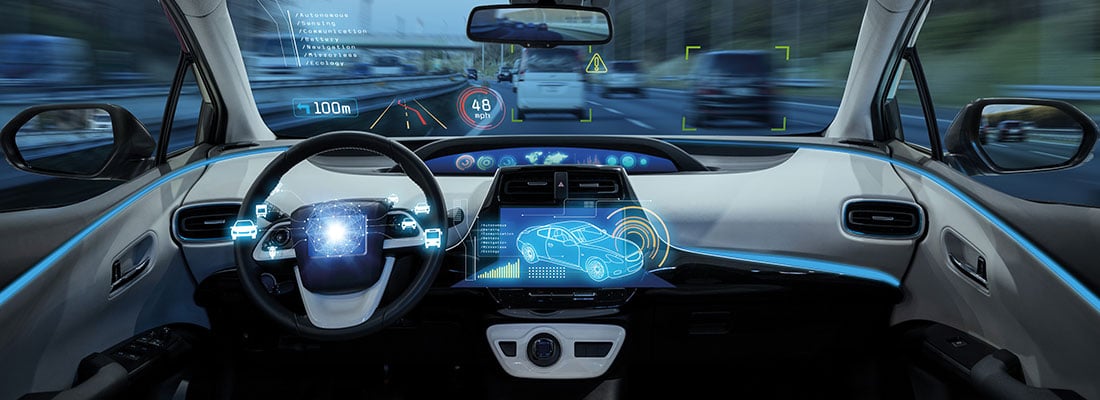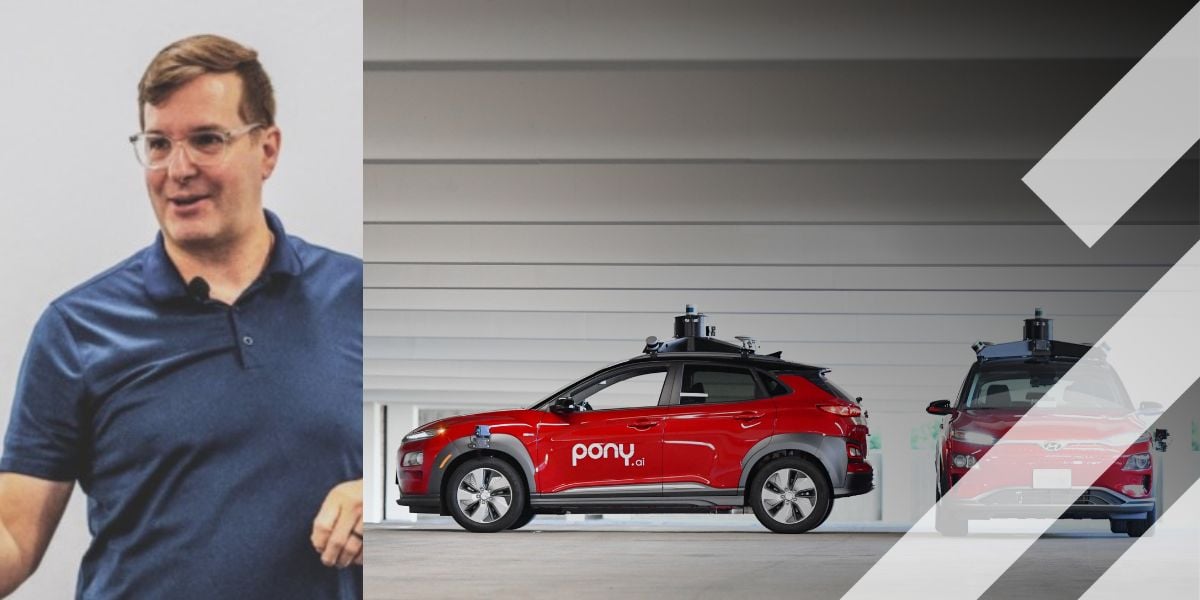Taming automated vehicles
Fully automated vehicles will soon be ready for public use. Rather than arguing about exactly when, now is the time for policy makers and road authorities to begin planning for this disruptive change.
There is little doubt that the prospect of connected and automated vehicles (CAVs or simply AVs) on our roads is one of the most challenging, and also attractive, disruptions to our existing transportation systems. This new technology will have a transformative effect on most aspects of mobility.
Vehicle manufacturers are competing with each other to be the first to offer such vehicles and not be left behind by technology companies such as Google. Governments and regional authorities also compete with each other to be the most open to testing and development of such vehicles. There is an abundance of academic papers and trade news extolling the benefits of AVs. There are also a few articles expressing concern about some of the unintended consequences of such vehicles.
It is worth considering the likely positive and potentially negative impacts of different levels of vehicle automation, and then explore how AVs will be used and what policies can manage and guide their deployment.
The impacts of automated vehicles
Automated vehicles will be owned or hired to deliver Mobility as a Service (MaaS). They will have a number of impacts and some may depend on the usage model. The most important contributions to welfare will be a considerable reduction in traffic accidents, followed by potential improvements in road capacities and traffic flow. They will eliminate some jobs, for example professional drivers, and reduce others: parking assistants, traffic wardensand perhaps vehicle insurance personnel.
They will also generate new trips, a ‘traffic induction’ effect: individuals previously unable to drive now will; vehicles will have to sometimes move around empty to serve or to park; average trip distances will grow as passengers can perform other activities while traveling. A few of these trips will be transferred from other modes.
These impacts will vary depending on the level of automation and whether the vehicles are owned or hired as a service. Table 1 summarizes these effects, including others that have been less thoroughly researched, together with known risks.
Expectations
To get a better understanding of what can be expected from the early years of AVs, a Delphi poll was undertaken involving 45 international experts, and their views analyzed by region. Considered here are only the responses most relevant to influencing positive and negative impacts of AVs and these are highlighted in Table 2 (overleaf).
A number of usage models are possible and some of them can be identified in advance. Companies such as Uber will run AV fleets offering MaaS; this may be for a single user or as a ride-sharing service for travelers with compatible origins and destinations. Individuals owning AVs at Level 4/5 will use them as a better car that allows them to perform other activities while traveling and simplifies parking. Owners may also be able to send their AVs to perform other journeys for family or even friends. Owners may also make their AV available, when not needed, for use by MaaS companies, Airbnb style. Some types of ‘ownership’ may restrict this – perhaps leasing or company cars.Each of these forms of use is likely to generate different levels of zero-occupancy movements. Several MaaS fleets operating without coordination and competing with each other are likely to be less efficient and to generate more empty movements. Authorities may need to develop policy tools to promote greater efficiency in these operations.
Sharing versus ownership
Europeans are most likely to adopt AVs as MaaS, whereas Latin Americans seem to be more attached to owning them. Overall, more than 60% of the answers to the Delphi survey stated that the majority of the AV fleet would be hired. It was also noticeable that the expectation was that owned AVs would generate between 10% and 20% more vehicle miles traveled (VMT), some of them at zero occupancy. In contrast, those relying on hired AVs are likely to reduce VMT compared with trips made in conventional cars; this is partly due to the difference between objective and perceived costs.
Car owners have only a vague understanding of the costs of using their vehicles. The decision to buy a vehicle may depend on total motoring costs per mile. The decision to use it for a particular journey depends on a lower marginal perceived cost: some fuel, plus tolls and parking.
Car owners still fail to perceive the actual cost of providing the infrastructure plus the externalities of congestion and emissions that they impose on the rest of the traveling and local population. The economic case for a good system of road user charging to bring these costs to the fore is well accepted by most professionals, but the political and social obstacles to implementing such a scheme are painfully well known.
The Delphi poll identified some additional issues. AV hiring was seen as available to all, whereas owning was perceived as elitist and less equitable. Replacing workers with machines and computers was also perceived as an ethical issue more taxing than replacing local workers with foreign ones.
The new policy frameworkAll indications are that Level 4/5 AVs will be available within the next five to seven years. Policies should be in place in advance to guide their development and deployment. The rate of adoption can be quite fast so policies should be deployed early. There were almost no cars in London in 1900, but they had practically eliminated horse-drawn carriages by 1915.
Testing AVs on public roads is one thing; allowing them for general public use is another. Most of the safety benefits of AVs would be achieved with Level 3 vehicles, but sanctioning their public use is not straightforward; Levels 4 and 5 require an even greater reworking of legal and policy frameworks. These, in turn, may depend at least partially on whether the AVs are owned or hired as MaaS.
It will be necessary to prepare specifications for the type approval of vehicles from Level 3 and up. It will also be necessary to clarify the assumed liability for Levels 4 and 5. The drivers of Level 3 vehicles will need a license and should be ready to take charge; therefore, they will at least share liability and will require insurance. For Levels 4 and 5 liability is more likely to be retained by suppliers of the vehicles and no insurance may be required for users; perhaps there would be minimum training and a simple test to ensure the vehicle is usedas intended, especially for Level 4.
Fast-tracking the benefits
Although most of the safety benefits are achievable with Level 3, the major individual benefits are achieved with Level 5: removing parking problems, allowing new users, performing other activities while traveling, and eliminating liability issues. These will speed up Level 5 adoption but bring, at the same time, some of the unintended consequences that the policies should seek to manage.
Once Levels 4 and 5 are available, there will be a need for improved demand management. It is expected that the policies will favor for-hire AVs over owned ones. Empty AVs circulating on congested roads will be a sore sight, creating universal irritation and rejection. Therefore, it will be relatively easy to justify road user charging (RUC) as a measure to manage use. Collection of such a charge will be simplified by the instrumentation of such vehicles including accurate location history. Any RUC will have the additional benefit of allowing bespoke pricing to encourage the use of more efficient forms of transport and discourage urban sprawl.
Automated buses, minibuses, trucks and vans will also need specific policies to satisfy similar requirements to those of car AVs. As such, they will affect an important group of stakeholders: professional drivers and their assistants. It will be necessary to design complementary measures to address the equity impacts of AVs. In some countries the process of replacing drivers with AVs will be slower because of the different costs of capital and labor. But all countries will need to devise effective means of up-skilling those displaced by automation; AVs will be a major and early case requiring resources and ingenuity.
Conclusions
With good policies and regulations in place, the future with automated vehicles looks disrupting but very promising. The more transformative the technology, however, the easier it is to miss opportunities. Authorities have a role and duty to achieve maximum benefits and efficiency with this new mode. Therefore, they should use policy instruments not only to minimize the adverse effects of AVs, but also to identify and manage opportunities to improve mobility, equity and welfare.
Unregulated and uncoordinated competition between MaaS operations will not achieve all the benefits available with this new technology. The advent of AVs will also create new opportunities for transportation and urban planning and traffic management. AVs will generate considerable amounts of data and some of that can be transmitted wirelessly and in real time. It will be important to ensure good coordination and availability of these data sources to support better intelligent traffic management and create a more robust base for transport modeling and planning. It would be a loss if these data sources were allowed to become proprietary and unavailable.
Source: Intertraffic World Magazine
Share your story
Do you have an innovation, research results or an other interesting topic you would like to share with the professionals in the infrastructure, traffic management, safety, smart mobility and parking industry? The Intertraffic website and social media channels are a great platform to showcase your stories!
Please contact our Sr Brand Marketing Manager Carola Jansen-Young.
Are you an Intertraffic exhibitor?
Make sure you add your latest press releases to your Company Profile in the Exhibitor Portal for free exposure.
Get up to speed on the mobility industry - our newsletter straight to your inbox!

.png?h=600&iar=0&w=1200)






